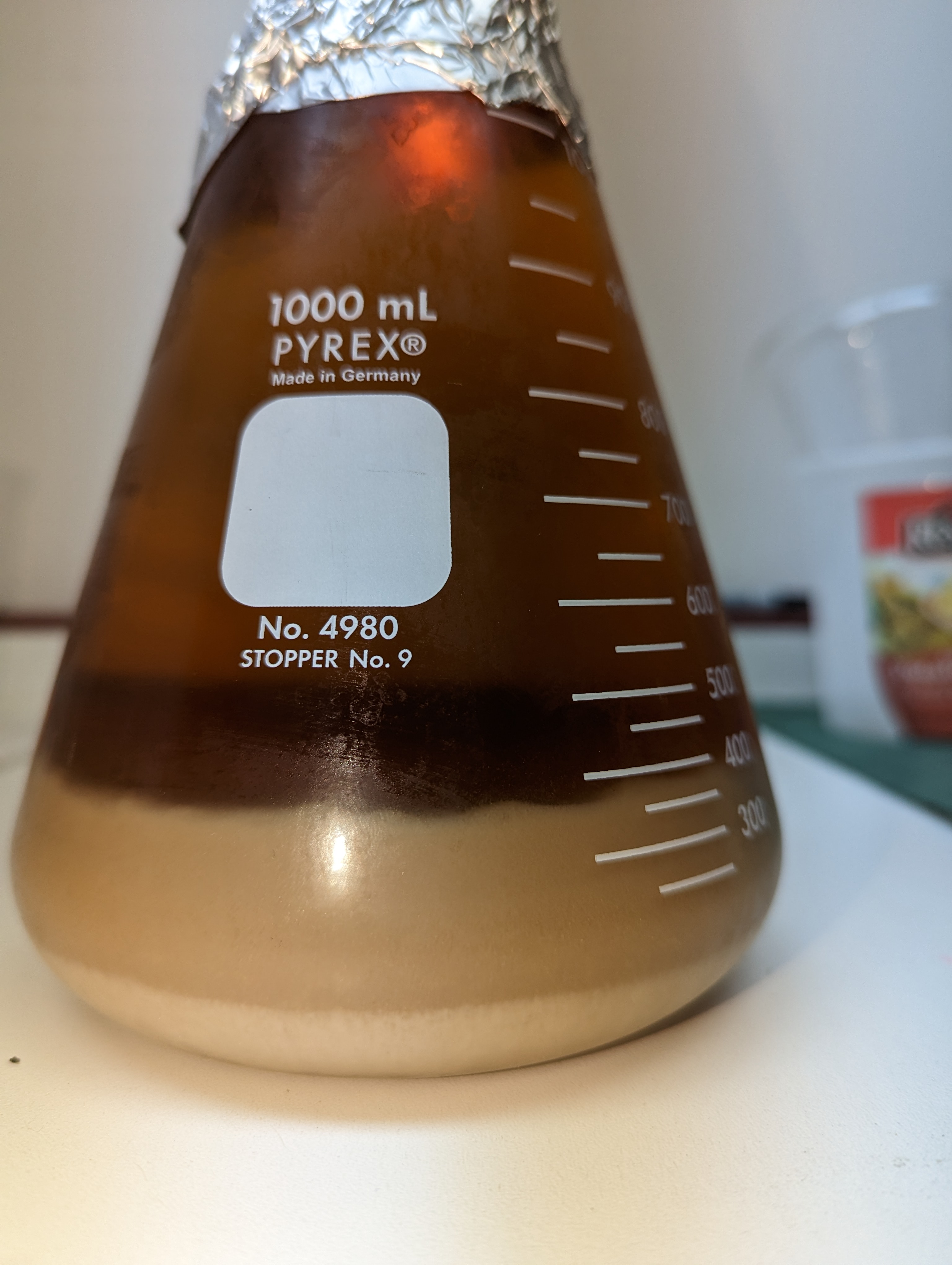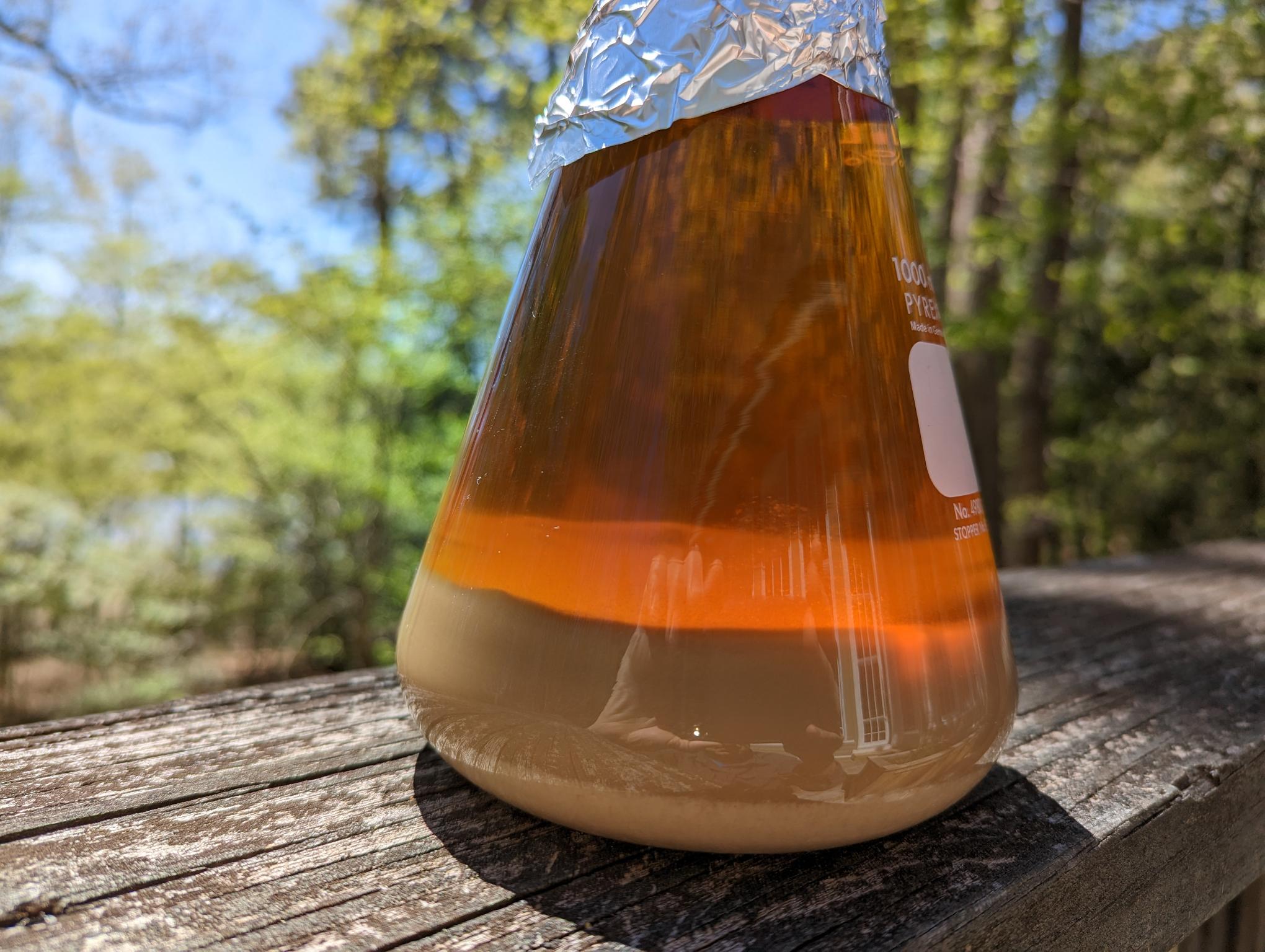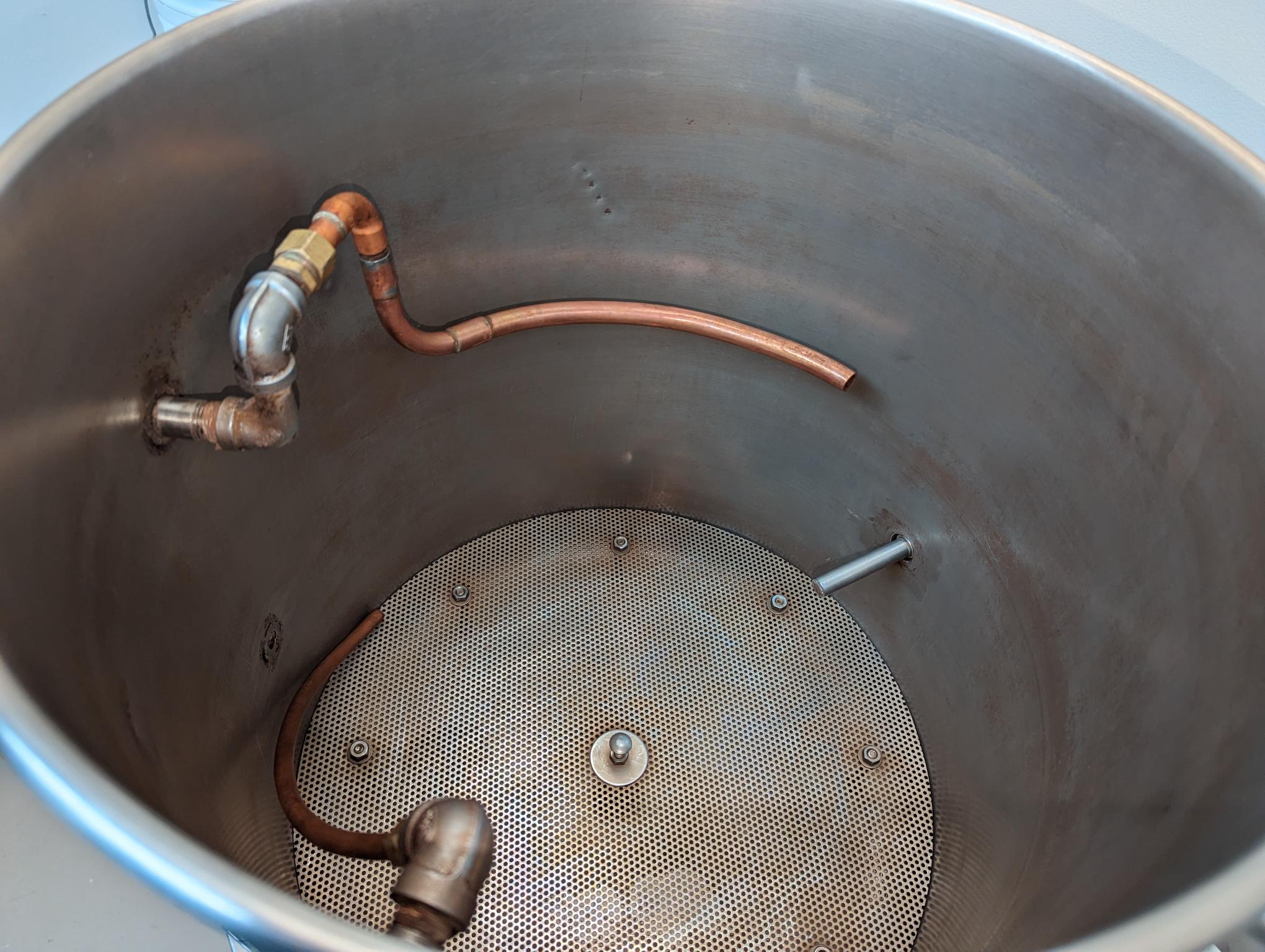dmaxweb
Well-Known Member
This is WLP029 harvested 2 days ago and refrigerated. Is the milky white bottom layer the yeast? Being a hybrid yeast, does it settle differently?





does the entire kettle go into the fermentor or do you let the kettle settle and only pour the clear stuff into the fermentor?
Every drop goes in the fermenter. Both the mash tun and boil kettle have false bottoms.does the entire kettle go into the fermentor or do you let the kettle settle and only pour the clear stuff into the fermentor?











You are correct. All of the liquid, save about 1-2 liters at most primarily in the wet hops, is transferred to the fermenter. I misunderstood your question.umm...
so no, it is not all going into the fermentor. Unless you are dumping the entire contents into the fermetor, hops, trub, cold break and all.
I'm guessing with the whirlpool, a lot of debris stays in the kettle, along with some wort.
that is why your yeast cake is looking pretty clean.
I'd say the lighter ~1/2" bottom layer is mostly pure yeast. The 1" darker layer on top is yeast with some trub mixed in.
That must have been a darn clean wort transfer from your kettle to get mostly yeast and a little bit of trub. Often we see the opposite, much more trub than yeast.
There are different schools of thought on this. What I harvest is about 50/50 beer/distilled water after swirling.Looks good. Next time just leave a little beer in the fermenter and swirl up the yeast with it. The yeast is stored healthier under beer rather than water.
I'd say the lighter ~1/2" bottom layer is mostly pure yeast. The 1" darker layer on top is yeast with some trub mixed in.
That must have been a darn clean wort transfer from your kettle to get mostly yeast and a little bit of trub. Often we see the opposite, much more trub than yeast.
I have 2 flasks like this. Should I decant, setting aside some of the clear beer, and dump the second layer and then combine the "pure" yeast layers from both flasks into a jar topped of with the clear beer?
It should still be healthy/vital enough for a direct pitch after 3-4 weeks in the fridge, once it warms back up to pitching temps.So, if I plan to use in 3-4 weeks, should I just leave in flask and decant then? Will that leave enough for 11.25 gallons of kolsch or should I do a starter?